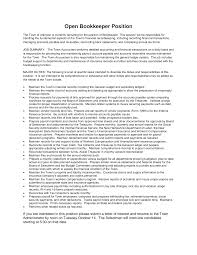
A chart of accounts is a listing of financial accounts that a business uses to record transactions. The chart is usually prepared by an accountant. A bookkeeper can access the list to record transactions. It lists the account codes of each type and dollar amount for each transaction. A chart can be used in many different ways. Learn how to create one. Here are some helpful tips to get you started. Let's take a look at the different types of charts of accounts.
A chart of accounts
A chart of accounts is important for a business's financial records. This helps you keep track and review financial performance. When accounts are not properly organized, however, it's difficult to make quick decisions. It can also cause confusion when reviewing reports and financial records. There are three things you can do to save time and frustration when setting up your chart of accounts. Once your chart is established, you can track the financial performance of your business.

Before you start creating your Chart of Accounts, you should have a clear idea of the needs of your clients. Your customers may require more information about their business than what is provided in your financial reports. Your customer's industry should be the focus of your chart. To automatically create the chart, you may need to create a company file if you work with a new customer. This will ensure that you have the exact specifications required by your client's industry.
You can add a new bank account
It's easy to add a chart account if you know what you're doing. From the General tab in Preferences Setup, click the Account Wizard option. This will take you through how to create a new Account. First, choose the name of the account you wish to add. You should choose a descriptive name that matches the real account's name. Once you have chosen the name of your account, you will be able to start creating transactions.
You can also inactive the G/L Account. In order to make the account inactive, it must be zero-balance. Inactive accounts will not be added to the selection lists. However, they will remain in the system for historical reasons. To hide the account from the Chart of Accounts List, click on the Inactive button. Inactive accounts are not able to be deleted, edited or removed. If you make changes to any field, however, they can be made back up.
You can delete an account
The Chart of Accounts allows you to delete an account. However, you must make sure that there are no transactions associated with the account that reference its ID. A non-zero account can be emptied of the beginning-balance entry, or you can use adjusting G/L to reduce its balance to zero. It is easier to complete the process if an account has been idle for more than two years. These steps will be completed and you are now ready to remove the account in the Chart of Accounts.

Delete an account from the Chart of Accounts in Sage 50 by choosing the appropriate option from the list. This option shows a list with all accounts you wish to delete. Click "Delete" to confirm this action. If you don't wish to delete your account, you can hide it. However, this will decrease the accuracy of account data. To delete the account, select "Delete" and click OK. Then, you will be prompted to confirm the deletion.
FAQ
What are the main types of bookkeeping system?
There are three main types of bookkeeping systems: manual, computerized and hybrid.
Manual bookkeeping refers to the use of pen & paper to record records. This method requires attention to every detail.
Software programs are used for computerized bookkeeping to manage finances. It is time- and labor-savings.
Hybrid bookkeeping combines both manual and computerized methods.
How does an accountant do their job?
Accountants work together with clients to maximize their money.
They work closely with professionals such as lawyers, bankers, auditors, and appraisers.
They also collaborate with other departments such as marketing and human resources.
Accountants are responsible to ensure that the books balance.
They determine how much tax must be paid, and then collect it.
They also prepare financial statement that shows how the company is performing.
What is the purpose and function of accounting?
Accounting gives a snapshot of financial performance through the recording, analysis, reporting, and recording of transactions between parties. It allows companies to make informed decisions about their financial position, such as how much capital they have, what income they expect to generate from operations, or whether they need additional capital.
Accountants record transactions in order to provide information about financial activities.
The data collected allows the organization to plan its future business strategy and budget.
It is important that the data you provide be accurate and reliable.
What is bookkeeping exactly?
Bookkeeping can be described as the keeping of records about financial transactions for individuals, businesses and organizations. This includes all income and expenses related to business.
Bookkeepers maintain financial records such as receipts. They prepare tax returns, as well as other reports.
What is an accountant and why are they so important?
An accountant tracks all your money, both earned and spent. They also keep track of the tax you pay and any deductions.
An accountant is a person who helps you keep track of your incomes.
They can prepare financial reports both for individuals and companies.
Accountants are essential because they need to understand everything about numbers.
Accounting also assists people in filing taxes and ensuring that they pay as little as possible tax.
Why is reconciliation important?
It's important, as mistakes are possible at any moment. Mistakes include incorrect entries, missing entries, duplicate entries, etc.
These problems can lead to serious consequences like inaccurate financial statements and missed deadlines, excessive spending, bankruptcy, and other negative effects.
What should I expect when hiring an accountant?
Ask about their qualifications, experience, and references when interviewing an accountant.
You want someone who has done this before and knows what he/she is doing.
Ask them for any specific skills or knowledge that they might have that you would find helpful.
Look for people who are trustworthy in your community.
Statistics
- a little over 40% of accountants have earned a bachelor's degree. (yourfreecareertest.com)
- Given that over 40% of people in this career field have earned a bachelor's degree, we're listing a bachelor's degree in accounting as step one so you can be competitive in the job market. (yourfreecareertest.com)
- In fact, a TD Bank survey polled over 500 U.S. small business owners discovered that bookkeeping is their most hated, with the next most hated task falling a whopping 24% behind. (kpmgspark.com)
- BooksTime makes sure your numbers are 100% accurate (bookstime.com)
- The U.S. Bureau of Labor Statistics (BLS) projects an additional 96,000 positions for accountants and auditors between 2020 and 2030, representing job growth of 7%. (onlinemasters.ohio.edu)
External Links
How To
Accounting for Small Businesses: How to Do It
Accounting for small businesses is one of the most important tasks in managing any business. Accounting involves keeping track of income, expenses, creating financial reports and paying taxes. You may also need to use software programs like Quickbooks Online. There are many ways you can go about doing your accounting for small businesses. You must choose the right method for you, based on your requirements. Here are some top options that you can consider.
-
Use paper accounting. If you like simplicity, paper accounting might be the best option. This method is very simple. All you need to do is keep track of all transactions. However, if you want to make sure that your records are complete and accurate, then you might want to invest in an accounting program like QuickBooks Online.
-
Use online accounting. Online accounting makes it easy to access your accounts anywhere, anytime. Wave Systems, Freshbooks and Xero are all popular choices. These types of software allow you to manage your finances, pay bills, send invoices, generate reports, and much more. They offer great features and benefits, and they are easy to use. These programs are great for saving time and money in accounting.
-
Use cloud accounting. Cloud accounting is another option that you could use. It allows data to be securely stored on a remote server. Cloud accounting offers many benefits over traditional accounting systems. First, it does not require you to buy expensive hardware or software. Because all your information is stored remotely, it provides better security. It eliminates the need to back up your data. Fourth, you can share your files with others.
-
Use bookkeeping software. Bookkeeping software is similar in function to cloud accounting. You will need to purchase a computer and then install the software. Once the software is installed, you will have access to the internet to view your accounts whenever and wherever you like. You can also view your balances and accounts right from your computer.
-
Use spreadsheets. Spreadsheets are used to enter your financial transactions manually. One example is a spreadsheet you can use to track your daily sales. Another benefit of using a spreadsheet is the ability to make changes at will without needing an entire update.
-
Use a cash book. A cashbook records all transactions that you make. Cashbooks come in different sizes and shapes depending on how much space you have available. You can either use a separate notebook for each month or use a single notebook that spans multiple months.
-
Use a check register. A check register is a tool that helps you organize receipts and payments. To transfer items to your check list, all you have to do is scan them in your scanner. To help you remember what was bought, you can make notes once you have scanned the items.
-
Use a journal. A journal is a logbook which keeps track of your expenses. This is best for those who have recurring expenses like rent, insurance, and utilities.
-
Use a diary. A diary is simply something you keep track of and that you can write in your own words. You can use it as a way to keep track and plan your spending habits.